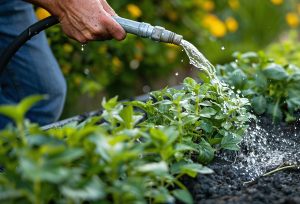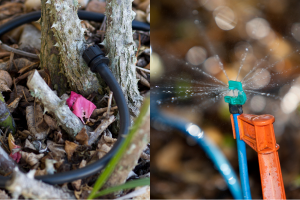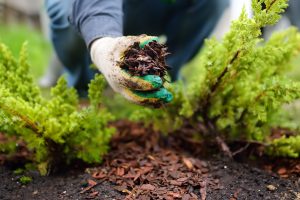Recent below-average rainfall, as reported by drought.gov, underscores the importance of effective water use and water-efficient gardening practices. Although we’re not yet in drought conditions, responsible management of freshwater resources remains crucial. Florida-Friendly Landscaping offers guidance on creating beautiful landscapes that conserve water. Key practices include selecting plants suited to their environment and grouping them by water needs. Implementing efficient irrigation systems and using mulch to retain soil moisture are additional methods for ensuring targeted and efficient water use in our landscapes and gardens.
How Much and When

Determining the appropriate frequency and amount of water for your landscape depends on various factors such as soil absorption rate, elevation, plant types, and current weather conditions. During prolonged dry periods like the present, it’s generally sufficient to water most landscape plants deeply once or twice a week, with each watering session typically delivering about three-quarters of an inch of water.
The optimal times for watering plants are early morning, before 10 a.m., and early evening, after 4 p.m. but before sunset. Avoid watering between 10 a.m. and 4 p.m., the hottest part of the day, especially in summer, when water is prone to evaporate quickly and can potentially harm plants by causing leaf burn. Morning watering allows plants to absorb water throughout the day and gives them time to dry before nightfall, which is ideal. Evening watering is acceptable but ensure plants have enough time to dry before dark to minimize the risk of fungal issues.
This approach helps ensure that plants receive adequate water while minimizing water loss through evaporation and potential harm to plant health. Remember to check your local water management district for watering restrictions and days you should water (St. Johns River Water Management District).
Smart Irrigation and Florida-Friendly Landscaping Water Conservation

Where possible, use drip or micro irrigation as well as smart timers. Drip and micro irrigation provide more targeted watering and reduce water waste. Drip irrigation is considered the most efficient method because the emitters typically have a flow rate of less than 1 gallon of water per hour. However, it needs to be close to the plant, which can be challenging in dense plantings. This is where micro irrigation excels, using different types of emitters, such as drip emitters, bubblers, and microsprays. Both systems are low-flow, focused watering methods that are easily installed. Regular inspection is required to ensure emitters aren’t clogged and there are no breaks in the line.
There are many different water timers on the market that hook up to your spigot and can be programmed. While some inexpensive models are available, it’s best to invest in a higher-quality timer to maximize water savings. Make sure to disconnect these during the winter to prevent freeze damage.
Some features to look for include:
- Easy programming
- Ability to program multiple days and times (remember to water a maximum of two days a week)
- Rain delay capability
Mulch
Mulching is another practice that can reduce water usage, specifically using organic mulch. Properly applied mulch, along with a well-designed irrigation system, can reduce the need for fertilizers and pesticides. Mulch helps retain soil moisture, control weed growth, and discourage insect pests and plant pathogens. Key points when using mulch include selecting the right type, applying the right amount, and avoiding inorganic mulch as much as possible.

While pine bark is a personal favorite, there are many other options like pine straw, melaleuca, eucalyptus, and even leaves. Some types break down faster than others, but all can be effective. Avoid artificially colored mulch unless it is labeled with the MSC Certification logo, especially when used around edibles. You can find more information about different mulches by accessing the University of Florida document “Florida-Friendly Mulches and Their Uses.”
For the best benefits, mulch should be applied about 2-3 inches deep. Use a mulch calculator to determine how many bags you will need, based on the dimensions of your bed in feet.
Other Considerations for Abnormally Dry Periods
Here are a few more considerations for these times. First, avoid fertilizing. Fertilizers promote new growth, which requires more water. Next, reduce the use of pesticides. Although plants may be stressed and pests more prevalent, pesticides can be more harmful during this period. Additionally, herbicides, especially contact herbicides like Roundup, need healthy and well-watered plants to be effective. Lastly, consider installing water harvesting systems like rain barrels. Collecting water in rain barrels during periods of ample rainfall can provide a free source of supplemental water when needed.
 1
1
